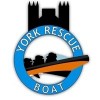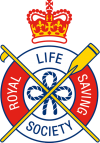
Overcoming a fear of water with our top tips
Overcoming a fear of water is a scary and challenging prospect for anyone, at any age, and can often be the biggest barrier for people that want to learn to swim but just can’t face the water. Fear of water is experienced by both children and adults and can start in babies or come on in later life.
The fear of water can be caused by a number of factors; perhaps due to a personal traumatic experience or through learned behaviours and preconceived ideas from others.
However, do not despair, this type of fear can be overcome through exposure therapy. To put your mind at ease, even Olympian Adam Peaty started his childhood with a fear of water, so never feel that overcoming this fear is unattainable, it is something we at Carol Saunders Swim School help learners with on a regular basis and we are here to help!
Here are a few of our tips to help overcome a fear of water and encourage you into the wonderful world of swimming:
- Build trust and positive visualisation
For someone who loves the water their sensory experience whets their appetite for what’s to come and they will feel physical reactions such as butterflies in their tummy, heightened senses, adrenaline rush…..the sounds are exciting, lots of splashing and the echo of people jumping in and having lots of fun….Compare this to someone who has an intrinsic fear of swimming, these noises may be interpreted as ear splitting, screeching, careless and reckless behaviour, the physical reactions may be uncontrollable nervousness, overwhelmed by fear and often a physical tummy ache.
Start by building a positive approach before the lesson begins, before you even arrive at the pool.
Being in a swimming pool environment can be a sensory overload for some.
Visualise the sights, the sounds, the smells, the temperature, the feel of the atmosphere and the water on your skin.
Building trust and a rapport with our learners is a key step in overcoming a fear and building your confidence. We take our learner’s concerns seriously and talk them through what we are going to do that day and reassure them that we will be with them the whole time and if they don’t feel comfortable we will stop whenever they need. This helps them feel safer and able to learn.
- Explaining the water
We take time to explain simply how you move through the water and how the water moves around you (Hydrodynamics) and how the water works with your body.
What is buoyancy (Hydrostatics) and what the physiological effects are when we relaxed and the effects when we contract muscles, how your body can work with the water and breath control.
During confidence building we will guide you through to experience the feeling of moving water over your whole body.
Fears are often borne out of the unknown and by giving you a greater understanding of the effects of being in water and introducing you to how these effects feel whilst in a safe and calm environment can help to rationalise these fears.
- Get your feet wet
With our guidance and teachers by your side we take small steps at your pace beginning by sitting on the side with your feet swishing in the water. This is so important as it allows you to enter the water when you are ready and experience the feeling of the water on your feet before you get in to eventually lowering yourself in to the water so your body is supported by the water.
- Gain confidence
You will always be in standing height with the support of your teachers, assistants and floatation aides. Over time we encourage you to walk through the water, showing and explaining how to keep balanced, how to splash water in to the air with your hands and over your body and as far as you feel confident; working your way to washing your face.
- Putting your face in the water
Learning aquatic relaxed breathing is something you can also do at home, we encourage rhythmic calming breathing, no breath holding….and making lots of bubbles! Making this a fun exercise helps and guiding children and in adults in a safe calm environment helps to unlearn the fear of having your face in the water.
- Practice floating, sculling and kicking
Being supported by teachers and assistants, you will practice relaxation techniques, and taking another big step in your aquatic journey with the trust and rapport you have with your teacher, you will learn how to take your feet off the pool floor, relaxing your head and ears in the water, to progress on to floating and how this feels. Importantly you will learn how to regain standing after floating.
You will develop these confidence and floating practices with sculling movements with your hands to create momentum and movement, at this stage we are introducing the vital mechanics of swimming strokes. This is where excitement takes over from the initial fears and where nervous new swimmers suddenly realise how far they really have come in their aquatic journey.
We will begin to introduce kicking practices with your body stretched out with our support the feeling of floating will help you to relax and begin to get used to being in the water unsupported.
Go at your own pace
Everyone is different, every fear is different and everyone’s aquatic journey is personal to them. We therefore encourage anyone attempting to overcome their fear to take it slowly and not to expect short-term miracles. Working through your fear to overcome it is a big step and the long-term results will be well-worth the patience!
Helping people overcome fears is such a rewarding experience for our team. Our One:One private sessions are perfect for anyone that has a fear of water or swimming, or anyone that may not feel comfortable in a swimming lesson group.
To find out more about our sessions, venues and availability please get in touch with our team on info@carolsaundersswimschool.co.uk / 01757 709703













